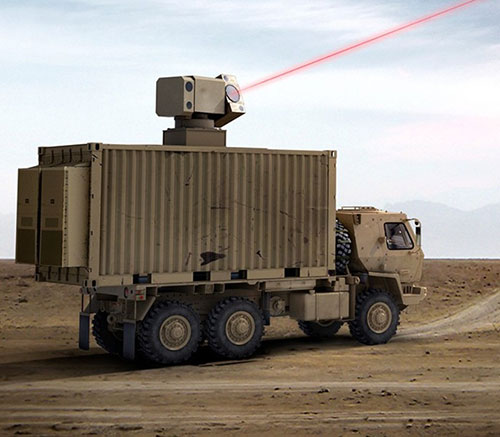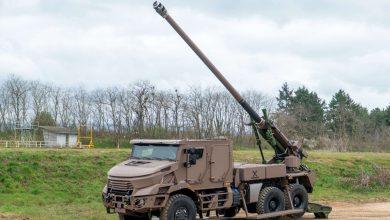
Airborne Innovation: General Atomics and Boeing Team Up for Cutting-Edge Laser Defense System
General Atomics Electromagnetic Systems and Boeing have revealed their collaboration to jointly explore prospects for a 100 kW-class adaptable to 250 kW-class High Energy Laser (HEL) armament system aimed at facilitating a range of aerial and missile defense functions. This alliance merges the advanced knowledge of both firms in directed energy to craft a premier HEL solution designed to provide exceptional, combat-ready defense for military personnel within a swift timeframe.
The HEL armament system will integrate GA-EMS’ adaptable distributed gain laser technology, HELLi-ion battery systems, and sophisticated thermal management with Boeing’s beam director alongside precision acquisition, tracking, and pointing (ATP) software. Beyond fulfilling the high-output power, range, versatility, and precision ATP standards essential for countering a growing spectrum of emerging threats, the HEL armament system’s compact design will ensure a diminished logistics burden and enhanced configurability for standalone operations and synergy with diverse mobile ground, maritime, and aerial platforms.
“GA-EMS has achieved remarkable progress in pioneering and showcasing highly adaptable laser technologies to enable high output power in more compact and lightweight frameworks,” commented Scott Forney, President of GA-EMS.
“We eagerly anticipate collaborating with Boeing to provide a laser armament system equipped with functionalities aimed at addressing current operational necessities while allowing flexibility and adaptability to accommodate progressive platform demands for missions across a multi-domain combat environment,” he noted.
“Our collaboration with General Atomics will introduce an innovative HEL defense capability to the warfighter, empowering support for future requirements and modernization goals,” stated Norm Tew, Boeing Missile and Weapon Systems Vice President and General Manager, and Huntsville Site Senior Executive.
“Together, we are harnessing sixty years of directed energy expertise and established, deployed technologies to expediently deploy a next-generation solution with unparalleled precision, performance, security, and cost-effectiveness,” he emphasized.
General Atomics Aeronautical Systems, Inc. (GA-ASI), a subsidiary of General Atomics, is a premier designer and producer of proven, trustworthy Remotely Piloted Aircraft (RPA) systems, radars, and electro-optical and related mission frameworks, which include the Predator® RPA series and the Lynx® Multi-mode Radar. With over six million flight hours, GA-ASI delivers long-endurance, mission-ready aircraft equipped with integrated sensor and data link systems, essential for sustained flight that offers situational awareness and rapid strike capabilities. The firm also manufactures various ground control stations and sensor control/image analysis software, provides pilot training and support services, and develops meta-material antennas.







